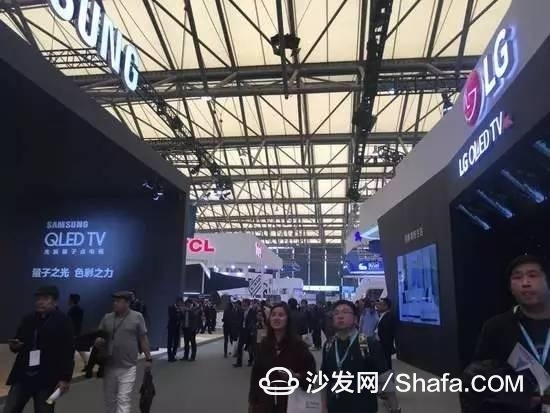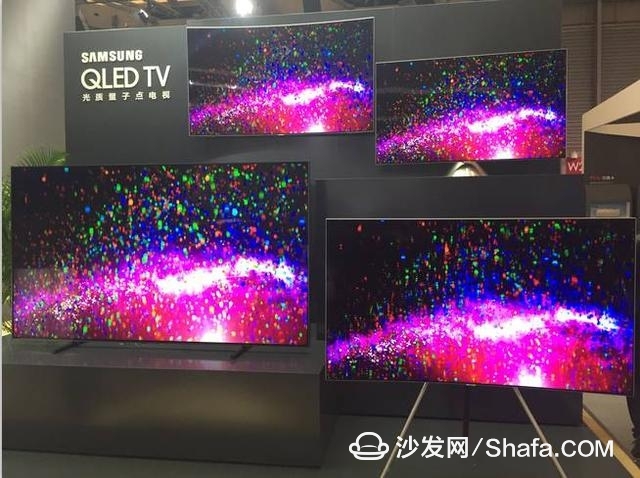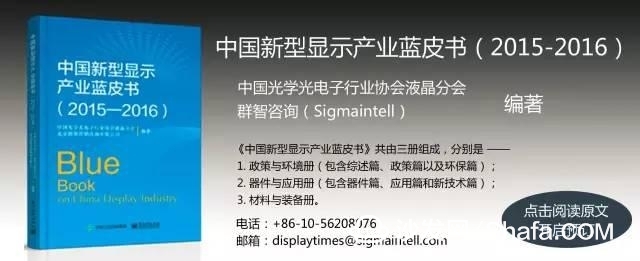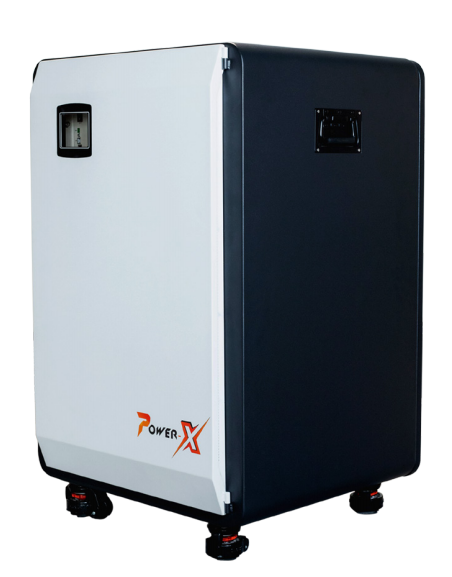The battle for technology in the global color TV industry is intensifying. On the one hand, companies represented by LG and Skyworth continue to exert their efforts on OLED display technology to quickly market OLED TVs. On the other hand, companies represented by TCL and Samsung are committed to upgrading liquid crystal display technology and applying quantum dot technology. In the field of color TV. In 2017, with the official launch of Sony's OLED TVs and Hisense's official QDs, the contest between the two camps gradually increased and became one of the biggest highlights of the 2017 color TV industry.
As the technology of domestic quantum film suppliers, such as domestic nanocrystalline technology, has gradually matured, the current price of quantum film has dropped by approximately 35%-40% year-on-year, which will enable brand manufacturers to actively promote quantum dot television in 2017. In 2016, the company will mainly promote manufacturers. For Samsung, Hisense, TCL and other brands, there will be more brands in the QD TV promotion camp in 2017. According to Sigmatinell's data, the scale of the global market in 2016 was 3.5 million units with a penetration rate of 1.5%. It is expected that the scale will increase to 6 million units in 2017, and the penetration rate will be close to 3%.
A number of manufacturers are deploying quantum dot LCD TVs to address the short color gamut of LCDs. In the last two years, manufacturers have begun to apply quantum dot technology to color TVs. LCD TVs using quantum dot technology can increase color gamut from 72% to 110%, significantly increasing the color performance of display devices. It is because of promising prospects for the development of quantum dots technology that TCL and Samsung adhere to the Quantum-dot television technology line and use quantum dot-TV as the main push product. Shanghai CES 2017 this year also clearly stated that Hisense will choose quantum dot technology as the technological breakthrough of TV product line in the future.
Hu Chunming, deputy secretary-general of the China Optics and Optoelectronics Industry Association Liquid Crystal Subcommittee, said that quantum dot photoluminescence technology is currently used in the market. Its essence is to add quantum dot materials to the backlight or color film of liquid crystal panels to enrich the color of monitors. The display unit is still a liquid crystal device. Quantum dot light-emitting diode technology (QLED) can only be called a "quantum dot display technology" in the true sense, but it is still in the experimental research stage, and it takes a long time from the experimental stage to the production stage.

Barry Young, president of the International OLED Association, believes that despite Samsung’s public appearance of QLED TV at CES 2017, from the technical point of view, the TV is not self-luminous QLED, and it should be called QD-LCD TV precisely, still belongs to the use of LCD. Technical color TV products.
Zhang Subing, deputy director of the Digital TV Standard Compliance Testing Center at the Ministry of Industry and Information Technology, told reporters that with the advancement of technology and market penetration, the large-size problem that has troubled the OLED market has been gradually solved, and 4K OLED TVs with a size of more than 50 inches have been sold on the market. As the market further expands and the price of large-size OLED TVs declines, more consumers will choose OLED TVs.
Quantum-dot LCD TVs and OLED thermal wars This year's AWE (China Household Electrical Appliances and Consumer Electronics Expo), black products are also competing. In the field of color TVs, QD TVs and OLED TVs are still hotly contested. It is too early to discuss the outcome.
In the "Standing Team" of Quantum Dots and OLED camps, this year, Hisense made it clear that it has joined the QD TV camp. Hisense Technology's technical director said, "Hisense selected ULED+ quantum dots." ULED is a LED-backlit LCD TV that incorporates multiple technologies from Hisense, which, combined with Quantum Dot technology, can make the color richer.
“We are also developing self-luminous QD TV QLEDs, which are expected to be launched in about 2019.†A media communications officer at Hisense disclosed to reporters, “The OLED blue life is not long, and if there is a breakthrough, we will follow up. ."
Skyworth, another leading company in the domestic color TV industry, continued to promote OLED organic TV on 2017AWE with great fanfare. Moreover, Skyworth has just announced that it will reduce the price of OLED TVs by 20% and accelerate the popularity of OLED TVs.
South Korea's TV giants Samsung and LG were also on the scene at AWE. LG showed an OLED “wallpaper TV†with a thickness of only 2.57mm. The thin framed art range murdered many shots; Samsung showed QLED light. To Quantum TV.

Each point of view Mr. Yang Jia, chief technical officer of Hisense ULED Technology “What TV pursues is true. TV is like a window through which users can see a more real world.â€
Yang Jia said that for watching television, all the pictures are presented by two elements: one is light and the other is color. Among them, ULED can obtain more accurate backlight, and quantum dots are a very good color gamut enhancement technology. The color gamut is planar and the brightness is deep. The combination of the two can better enhance the three-dimensional color space and achieve a more realistic Screen effect. Hisense TV series ULED super-quality TV formally gathered the advantages of these two points, became the benchmark product of 2017 LCD TV picture quality, and is another milestone product of Hisense's promotion of LCD display technology upgrade.
In addition, during the development of LCD TVs along the final quantum dots, ULED and quantum dots are not complementary at every stage. At this stage, ULED technology owners and quantum dots are complementary, and when it develops into the era of quantum dots Quantum dot technology may dominate, ULED will also get some inheritance, but the proportion will decline.
In addition, this "window" is not only more and more real, but also larger and larger, and the big screen has become an absolute trend.
Yang Jia thinks there are two main reasons for this. The first is the high-definition of signal content. Today, both the definition of high-definition wired signals and the definition of online video have greatly improved, satisfying the needs of users to watch high-definition; second is The signal processing ability of the TV itself has become stronger and stronger, and the resolution/contrast of the display device has become higher and higher. In the past, if you look at the LCD TV, if you are too close, the screen will have graininess and other problems, and now you have A lot of improvements have been made, and the big screen can also bring about better immersion.
For a 75-inch TV, Yang Jia also gives a formula: 3 times the height of the TV. If it is a 4K TV, divide it by 2. The height of the 75-inch LCD TV is about 1 meter. It is an FHD TV. The viewing distance is 3 meters, and the viewing distance of a 4K 75-inch LCD TV is about 1.5 meters.
Of course, ULED is also in the continuous upgrading of the user to get a more realistic picture, Yang Jia said ULED will do better in two areas in the future, the first is ULED to do more partitions, only a more detailed partition, The display will be more perfect; the second is slimming, the future ULED TV will become thinner and thinner.
For increasing the number of backlight partitions, Yang Jia believes that the most difficult problem is a trade-off problem. For example, if there are more partitions and high brightness, there will be problems with large heat and power, and product reliability will decline. The major color TV companies are Differences in zoning control are often reflected in these places. Hisense’s advantage is the development of the entire LCD backlight control technology over the years. It is well aware of the design and cost control of the LCD. Hisense also achieved a leading position in TV backlight control.

For OLED TVs, Yang Jia thinks that either white OLEDs or RGB OLEDs have fatal problems at this stage.
RGB OLED performance is good, but the large-screen yield is too low, which is why Samsung gave up large-screen OLED, and the main reason for the small-screen OLED.
The problem with the white light OLED is that it is because of the addition of a layer of color filter film, there are a lot of light film to block, so the light efficiency of the OLED TV will drop, if you want to achieve high brightness, then the power consumption will be particularly large The life will be greatly reduced; but if you control the power consumption, then the brightness will inevitably not be too high, which is why everyone sees white light OLED TVs do no problem, but it is difficult to do bright.
Mr. Liu Junguang, vice president of color TV marketing, Greater China, Samsung Electronics Samsung QLED technology independent research and development: the world's only metal cadmium-free quantum dot technology Nowadays, the TV industry stands at the crossroads of display upgrade. In this regard, Liu Junguang said: “Quantum dots are large The screen shows the best and most reliable solution for the product", inorganic materials are more stable than organic materials, Samsung QLED TV upgraded the metal cadmium-free quantum dot technology, the peak brightness was raised to between 1500 ~ 2000nits, and remained full Color performance, coupled with moth-eye bionic technology, allows you to view video content without interference in most scenarios.
Samsung’s acquisition of QD Vision, a QD R&D company, in 2016 will benefit Samsung’s R&D of quantum dot technology. The new metal-free cadmium dot technology is entirely independently developed by Samsung and is the only quantum dot in the world that uses cadmium-free environmental technology. Technology, strong R & D strength without doubt. The performance of Samsung’s flagship Quantum-dot TV also leads the entire quantum dot field, and its comprehensive picture quality also stands at the top of the industry.
Comprehensive from: Beijing Commercial Daily, Wanwei Home Grid, Zhongguancun Online, First Financial Daily

Smart TV/box information can focus on smart TV information network sofa butler (http://), China's influential TV box and smart TV website, providing information, communication, TV boxes, smart TVs, smart TV software, etc. Answering questions.
As the technology of domestic quantum film suppliers, such as domestic nanocrystalline technology, has gradually matured, the current price of quantum film has dropped by approximately 35%-40% year-on-year, which will enable brand manufacturers to actively promote quantum dot television in 2017. In 2016, the company will mainly promote manufacturers. For Samsung, Hisense, TCL and other brands, there will be more brands in the QD TV promotion camp in 2017. According to Sigmatinell's data, the scale of the global market in 2016 was 3.5 million units with a penetration rate of 1.5%. It is expected that the scale will increase to 6 million units in 2017, and the penetration rate will be close to 3%.
A number of manufacturers are deploying quantum dot LCD TVs to address the short color gamut of LCDs. In the last two years, manufacturers have begun to apply quantum dot technology to color TVs. LCD TVs using quantum dot technology can increase color gamut from 72% to 110%, significantly increasing the color performance of display devices. It is because of promising prospects for the development of quantum dots technology that TCL and Samsung adhere to the Quantum-dot television technology line and use quantum dot-TV as the main push product. Shanghai CES 2017 this year also clearly stated that Hisense will choose quantum dot technology as the technological breakthrough of TV product line in the future.
Hu Chunming, deputy secretary-general of the China Optics and Optoelectronics Industry Association Liquid Crystal Subcommittee, said that quantum dot photoluminescence technology is currently used in the market. Its essence is to add quantum dot materials to the backlight or color film of liquid crystal panels to enrich the color of monitors. The display unit is still a liquid crystal device. Quantum dot light-emitting diode technology (QLED) can only be called a "quantum dot display technology" in the true sense, but it is still in the experimental research stage, and it takes a long time from the experimental stage to the production stage.

Zhang Subing, deputy director of the Digital TV Standard Compliance Testing Center at the Ministry of Industry and Information Technology, told reporters that with the advancement of technology and market penetration, the large-size problem that has troubled the OLED market has been gradually solved, and 4K OLED TVs with a size of more than 50 inches have been sold on the market. As the market further expands and the price of large-size OLED TVs declines, more consumers will choose OLED TVs.
Quantum-dot LCD TVs and OLED thermal wars This year's AWE (China Household Electrical Appliances and Consumer Electronics Expo), black products are also competing. In the field of color TVs, QD TVs and OLED TVs are still hotly contested. It is too early to discuss the outcome.
In the "Standing Team" of Quantum Dots and OLED camps, this year, Hisense made it clear that it has joined the QD TV camp. Hisense Technology's technical director said, "Hisense selected ULED+ quantum dots." ULED is a LED-backlit LCD TV that incorporates multiple technologies from Hisense, which, combined with Quantum Dot technology, can make the color richer.
“We are also developing self-luminous QD TV QLEDs, which are expected to be launched in about 2019.†A media communications officer at Hisense disclosed to reporters, “The OLED blue life is not long, and if there is a breakthrough, we will follow up. ."
Skyworth, another leading company in the domestic color TV industry, continued to promote OLED organic TV on 2017AWE with great fanfare. Moreover, Skyworth has just announced that it will reduce the price of OLED TVs by 20% and accelerate the popularity of OLED TVs.
South Korea's TV giants Samsung and LG were also on the scene at AWE. LG showed an OLED “wallpaper TV†with a thickness of only 2.57mm. The thin framed art range murdered many shots; Samsung showed QLED light. To Quantum TV.

Yang Jia said that for watching television, all the pictures are presented by two elements: one is light and the other is color. Among them, ULED can obtain more accurate backlight, and quantum dots are a very good color gamut enhancement technology. The color gamut is planar and the brightness is deep. The combination of the two can better enhance the three-dimensional color space and achieve a more realistic Screen effect. Hisense TV series ULED super-quality TV formally gathered the advantages of these two points, became the benchmark product of 2017 LCD TV picture quality, and is another milestone product of Hisense's promotion of LCD display technology upgrade.
In addition, during the development of LCD TVs along the final quantum dots, ULED and quantum dots are not complementary at every stage. At this stage, ULED technology owners and quantum dots are complementary, and when it develops into the era of quantum dots Quantum dot technology may dominate, ULED will also get some inheritance, but the proportion will decline.
In addition, this "window" is not only more and more real, but also larger and larger, and the big screen has become an absolute trend.
Yang Jia thinks there are two main reasons for this. The first is the high-definition of signal content. Today, both the definition of high-definition wired signals and the definition of online video have greatly improved, satisfying the needs of users to watch high-definition; second is The signal processing ability of the TV itself has become stronger and stronger, and the resolution/contrast of the display device has become higher and higher. In the past, if you look at the LCD TV, if you are too close, the screen will have graininess and other problems, and now you have A lot of improvements have been made, and the big screen can also bring about better immersion.
For a 75-inch TV, Yang Jia also gives a formula: 3 times the height of the TV. If it is a 4K TV, divide it by 2. The height of the 75-inch LCD TV is about 1 meter. It is an FHD TV. The viewing distance is 3 meters, and the viewing distance of a 4K 75-inch LCD TV is about 1.5 meters.
Of course, ULED is also in the continuous upgrading of the user to get a more realistic picture, Yang Jia said ULED will do better in two areas in the future, the first is ULED to do more partitions, only a more detailed partition, The display will be more perfect; the second is slimming, the future ULED TV will become thinner and thinner.
For increasing the number of backlight partitions, Yang Jia believes that the most difficult problem is a trade-off problem. For example, if there are more partitions and high brightness, there will be problems with large heat and power, and product reliability will decline. The major color TV companies are Differences in zoning control are often reflected in these places. Hisense’s advantage is the development of the entire LCD backlight control technology over the years. It is well aware of the design and cost control of the LCD. Hisense also achieved a leading position in TV backlight control.

RGB OLED performance is good, but the large-screen yield is too low, which is why Samsung gave up large-screen OLED, and the main reason for the small-screen OLED.
The problem with the white light OLED is that it is because of the addition of a layer of color filter film, there are a lot of light film to block, so the light efficiency of the OLED TV will drop, if you want to achieve high brightness, then the power consumption will be particularly large The life will be greatly reduced; but if you control the power consumption, then the brightness will inevitably not be too high, which is why everyone sees white light OLED TVs do no problem, but it is difficult to do bright.
Mr. Liu Junguang, vice president of color TV marketing, Greater China, Samsung Electronics Samsung QLED technology independent research and development: the world's only metal cadmium-free quantum dot technology Nowadays, the TV industry stands at the crossroads of display upgrade. In this regard, Liu Junguang said: “Quantum dots are large The screen shows the best and most reliable solution for the product", inorganic materials are more stable than organic materials, Samsung QLED TV upgraded the metal cadmium-free quantum dot technology, the peak brightness was raised to between 1500 ~ 2000nits, and remained full Color performance, coupled with moth-eye bionic technology, allows you to view video content without interference in most scenarios.
Samsung’s acquisition of QD Vision, a QD R&D company, in 2016 will benefit Samsung’s R&D of quantum dot technology. The new metal-free cadmium dot technology is entirely independently developed by Samsung and is the only quantum dot in the world that uses cadmium-free environmental technology. Technology, strong R & D strength without doubt. The performance of Samsung’s flagship Quantum-dot TV also leads the entire quantum dot field, and its comprehensive picture quality also stands at the top of the industry.
Comprehensive from: Beijing Commercial Daily, Wanwei Home Grid, Zhongguancun Online, First Financial Daily

Smart TV/box information can focus on smart TV information network sofa butler (http://), China's influential TV box and smart TV website, providing information, communication, TV boxes, smart TVs, smart TV software, etc. Answering questions.
Off Grid Energy Storage System
Saintish all in one energy storage system is stand-alone and not connected to the main grid. It produce clean energy and is a great replacement for traditional generators.
There are battery and inverter inluded in the cabinet, and we use LiFePO4 Battery banks, which are safe, stable and long life span. The inverter will transfer DC power to AC for the electronics.
Highlights:
- Fast Charging 1.5Hrs charging time from 0% to 100% SOC when charging with full current
- Wi-Fi connection Convenient monitoring on the mobile phone
- Easy Maintenance Module design easy for mainterance
- Light for the dark Blue lights on the sides of the door to light Power-X in the dark

Power System, Backup Power, Energy Storage System, Power Solution, Home Generator
Hangzhou Saintish Technology Co.,Ltd. , https://www.saintishtech.com